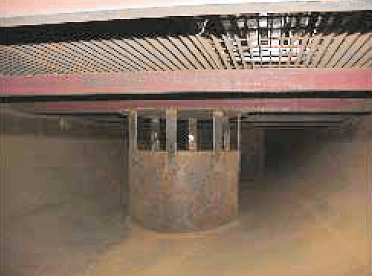Flow Accelerated Corrosion
FLOW ACCELERATED CORROSION IN HORIZONTAL DEAERATORS
Summary: During the routine inspection of horizontal deaerators, advanced flow accelerated corrosion is frequently discovered on the bottom of the heater vessel shell. Significant metal thickness is sometimes lost from the pressure shell as a result of this effect.
Definition of FAC: Flow-accelerated corrosion (FAC) is metal loss that occurs in carbon steel equipment when the normally protective oxide layer is dissolved into a flowing stream of water and/or steam. The metal goes through continuous cycling of oxide layer production, followed by loosening and dissolution into the turbulent stream. The oxide layer is not able to protect the metal, and the continuous loss of the oxide layer results in the steady loss of metal thickness.
Inspection of heater: Upon entry into the bottom portion of the heater vessel, the areas subject to FAC are immediately obvious – bright, polished patches of metal that are easily identified on the vessel shell below the tray area. These areas are also characterized by severe pitting.

Typical location of FAC at bottom of heater shell
Analysis of problem: Normally, a protective oxide layer forms on all carbon steel internal surfaces and serves to inhibit further corrosion. In the case of FAC, water that flows with excessive velocity and/or turbulence continually dissolves the oxide layer. Thus, the local areas in the heater vessel subject to FAC are exposed to water with such flow characteristics.
Stopping FAC: KCD can design modifications to deaerators to reduce water velocities and more evenly distribute the flow. The net effect will be the elimination of FAC and an increase in the life of the vessel.
